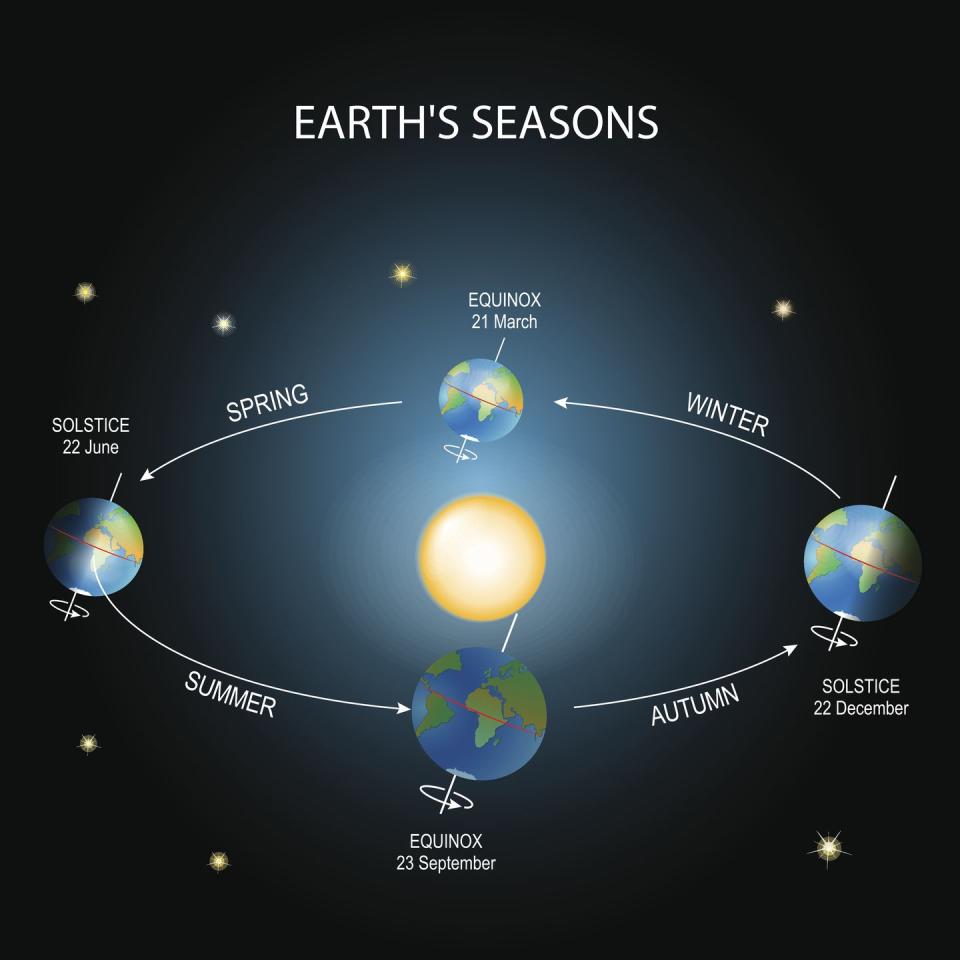Fall 2021 Officially Begins on the Autumnal Equinox

The autumnal equinox occurs every September in the Northern Hemisphere, marking the beginning of fall, which is September 22 in 2021. There are two equinoxes a year. The autumnal equinox, also known as the fall equinox and the September equinox, occurs in September, while the vernal equinox occurs in March. After the autumnal equinox, the days start getting shorter, and the nights get longer.
In most of the U.S., September is the time when we reluctantly stash our pool tubes and start brainstorming Halloween costume ideas. It's also when the fall equinox officially marks the end of one season and the start of the next. Here's what that means, the difference between an equinox and a solstice, and when to expect the first day of fall in 2021.
What is an equinox?
An equinox is the point at which the sun sits directly above the earth's equator, and day and night are of approximately equal length across the world. The word "equinox" is derived from two words: aequus, which is Latin for “equal,” and nox, Latin for “night.”
It's also the halfway point between the summer solstice on June 20, 2021, and the winter solstice that occurs on Tuesday, December 2021.
When is the first day of fall 2021?
Wednesday, September 22, is the first official day of fall. This also makes it the last day of summer, so start refreshing your sweater collection now.
It's worth noting that this is the beginning of autumn in the Northern Hemisphere; in the Southern Hemisphere (where only 1 percent of the world's population lives) the equinox dates are reversed. In the Southern Hemisphere, fall begins in March and spring arrives in September.
What is the difference between an equinox and a solstice?
No, but both have to do with Earth's relationship to the sun. As we've established, during an equinox, the sun crosses the equator, making that date's stretches of day and night about the same length of time.

A solstice, on the other hand, is a period in which the sun is at its farthest point from the equator. Like the equinoxes, there are two solstices a year. During the summer solstice, the North Pole tilts to a point closest to the sun, making it the longest day of the year. The opposite happens during the winter solstice: the South Pole is tilted closest to the sun, making the day of that solstice the shortest, darkest day of the year (again, we're specifically referring to the Northern Hemisphere here).
The beginnings of winter, spring, summer, and fall are ushered in by four events: The winter solstice, the vernal equinox, the summer solstice, and the autumnal equinox, respectively.
What time is the 2021 autumnal equinox?
The exact time of the fall equinox varies by time zone in North America.
Eastern Daylight Time: Those living in the eastern time zone will experience the equinox at 3:21 p.m. EDT, according to the Farmer's Almanac.
Central Time: In the Central Time Zone, expect the equinox at 2:21 p.m. CDT.
Mountain Time: For cities in the Mountain Time Zone, the equinox is at 1:21 pm MDT.
Pacific Time: Fall arrives in the Pacific Time Zone at 12:21 p.m. PDT.
For more stories like this, sign up for our newsletter.
You Might Also Like

